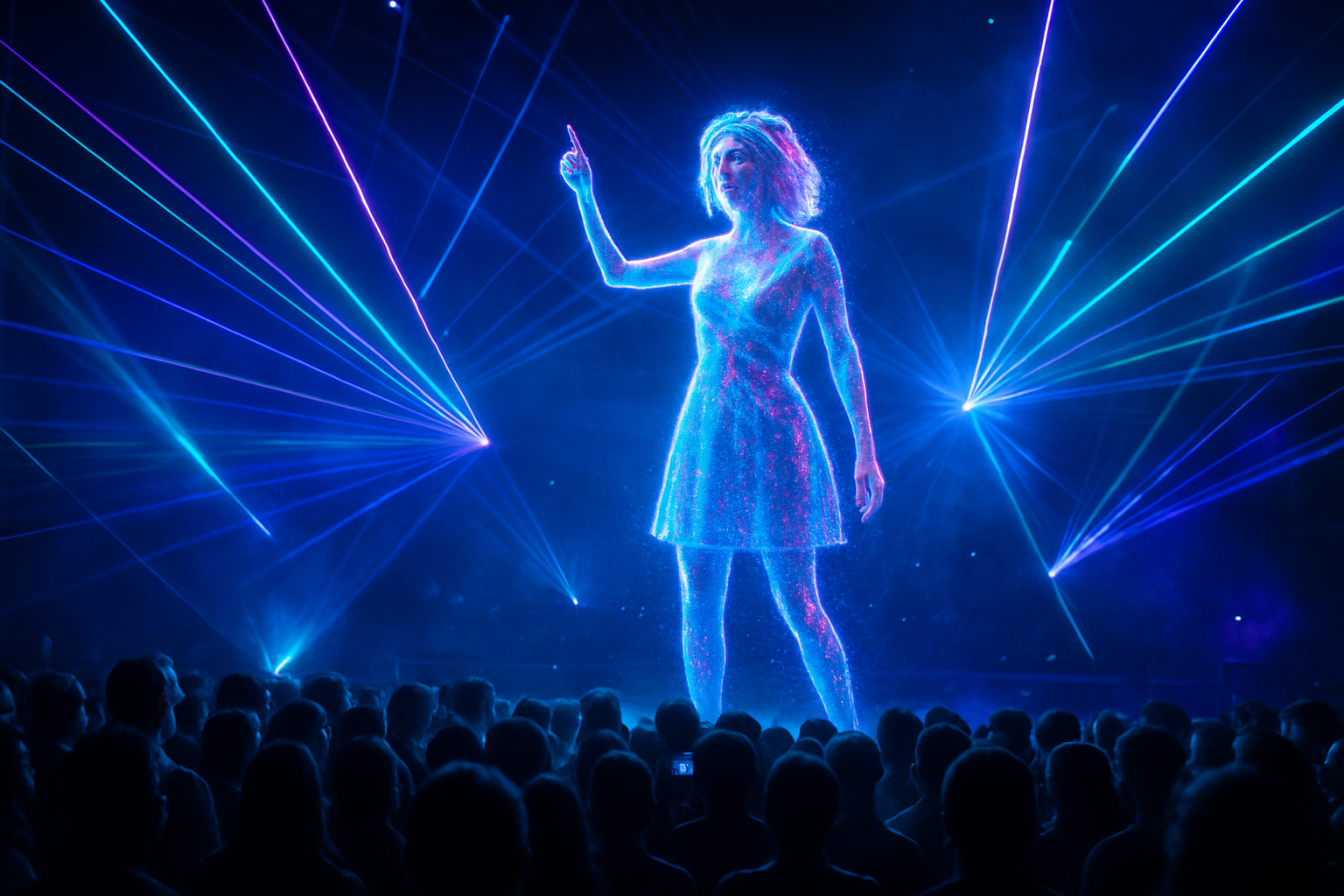Holographic Performances: The New Frontier of Live Entertainment
In the ever-evolving landscape of live entertainment, a groundbreaking technology is reshaping the way we experience concerts, theater, and beyond. Holographic performances, once confined to the realm of science fiction, have burst onto the scene, captivating audiences with their lifelike projections and opening up new possibilities for artists and event organizers alike. This revolutionary approach to live shows is not only bringing deceased icons back to the stage but also enabling unprecedented collaborations and pushing the boundaries of what's possible in live entertainment.

From Novelty to Mainstream
What began as a headline-grabbing novelty has rapidly evolved into a legitimate form of entertainment. Following the Tupac hologram, a wave of holographic performances featuring deceased artists swept across the globe. From Michael Jackson at the Billboard Music Awards to Whitney Houston’s posthumous world tour, these spectral appearances have allowed fans to experience the magic of legendary performers one more time. The technology has since expanded beyond resurrections, with living artists using holograms to appear in multiple locations simultaneously or create mind-bending visual effects during their shows.
The Technical Marvel Behind the Magic
At the heart of holographic performances lies a complex interplay of cutting-edge technologies. High-powered projectors, motion capture systems, and advanced computer graphics come together to create the illusion of a three-dimensional figure on stage. The Pepper’s Ghost technique, a 19th-century illusion method, is often employed, using reflective surfaces to project the image onto a transparent screen. This, combined with meticulous sound engineering and lighting design, creates a seamless integration of the hologram with live performers and stage elements.
Ethical Considerations and Artistic Integrity
As holographic performances gain popularity, they also raise important ethical questions. The use of deceased artists’ likenesses has sparked debates about consent, legacy, and the commodification of an artist’s image. Some argue that these performances honor and preserve the memory of beloved performers, while others view them as exploitative. The industry is grappling with establishing guidelines and obtaining proper permissions from estates to ensure respectful use of artists’ posthumous images.
The Future of Live Entertainment
Holographic technology is poised to revolutionize not just music concerts but a wide array of live events. Theater productions are experimenting with holographic set pieces and characters, blending the physical and digital worlds in unprecedented ways. Educational institutions are exploring the use of holograms for lectures and demonstrations, potentially bringing world-class educators to remote locations. As the technology continues to advance, we may see fully immersive holographic environments that blur the lines between reality and virtual experiences.
Economic Impact and Industry Transformation
The rise of holographic performances is reshaping the economics of the entertainment industry. While the initial costs of producing a holographic show can be substantial, the ability to tour without the physical presence of the artist opens up new revenue streams. Venues can host performances by multiple artists in a single night, and simultaneous shows in different locations become possible. This technology also presents new opportunities for advertising and brand partnerships, with holographic product placements and interactive campaigns on the horizon.
Audience Reception and the Live Experience
Despite initial skepticism, audiences have largely embraced holographic performances. The novelty factor plays a significant role, but many attendees report genuine emotional connections to these digital apparitions. However, questions remain about the long-term viability of holograms as a replacement for live performers. Critics argue that the energy and spontaneity of a live show cannot be replicated by pre-recorded projections, no matter how sophisticated. The challenge for producers is to find the right balance between technological spectacle and the irreplaceable human element of live performance.
Challenges and Limitations
While holographic technology has made significant strides, it still faces several challenges. The need for specialized equipment and controlled lighting conditions limits the venues where these performances can take place. Additionally, creating convincing holograms requires extensive post-production work, making last-minute changes or improvisation difficult. There’s also the risk of the uncanny valley effect, where near-perfect recreations of humans can sometimes appear unsettling to viewers. As the technology evolves, addressing these limitations will be crucial for widespread adoption.
A New Era of Creative Possibilities
Holographic performances are ushering in a new era of creative possibilities in the entertainment world. Artists and producers are only beginning to scratch the surface of what’s possible with this technology. From historical reenactments featuring long-gone figures to fantastical collaborations between artists from different eras, the potential for unique and compelling content is vast. As audiences become more accustomed to these digital spectacles, we can expect to see increasingly innovative and boundary-pushing uses of holographic technology in live entertainment.





